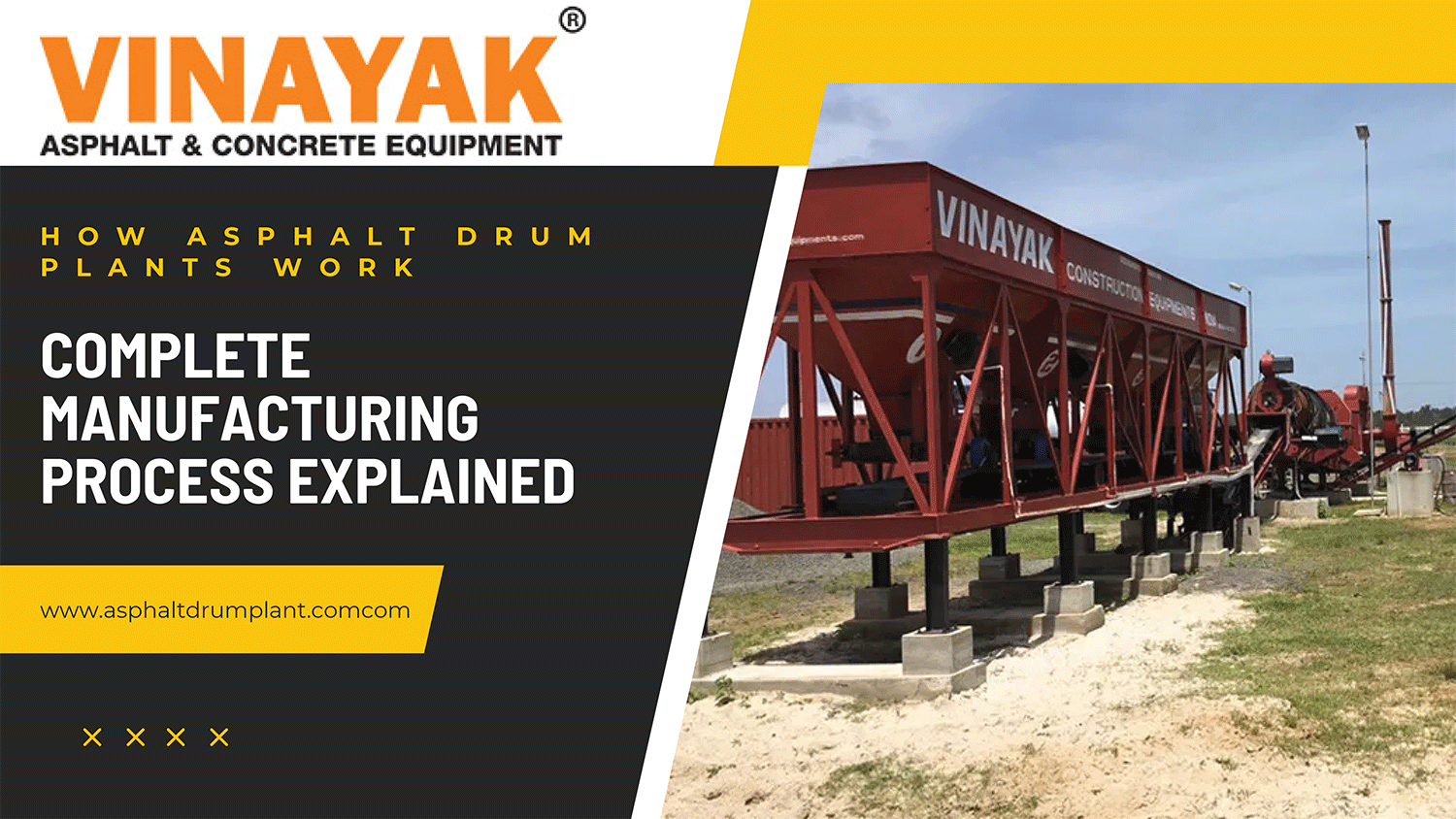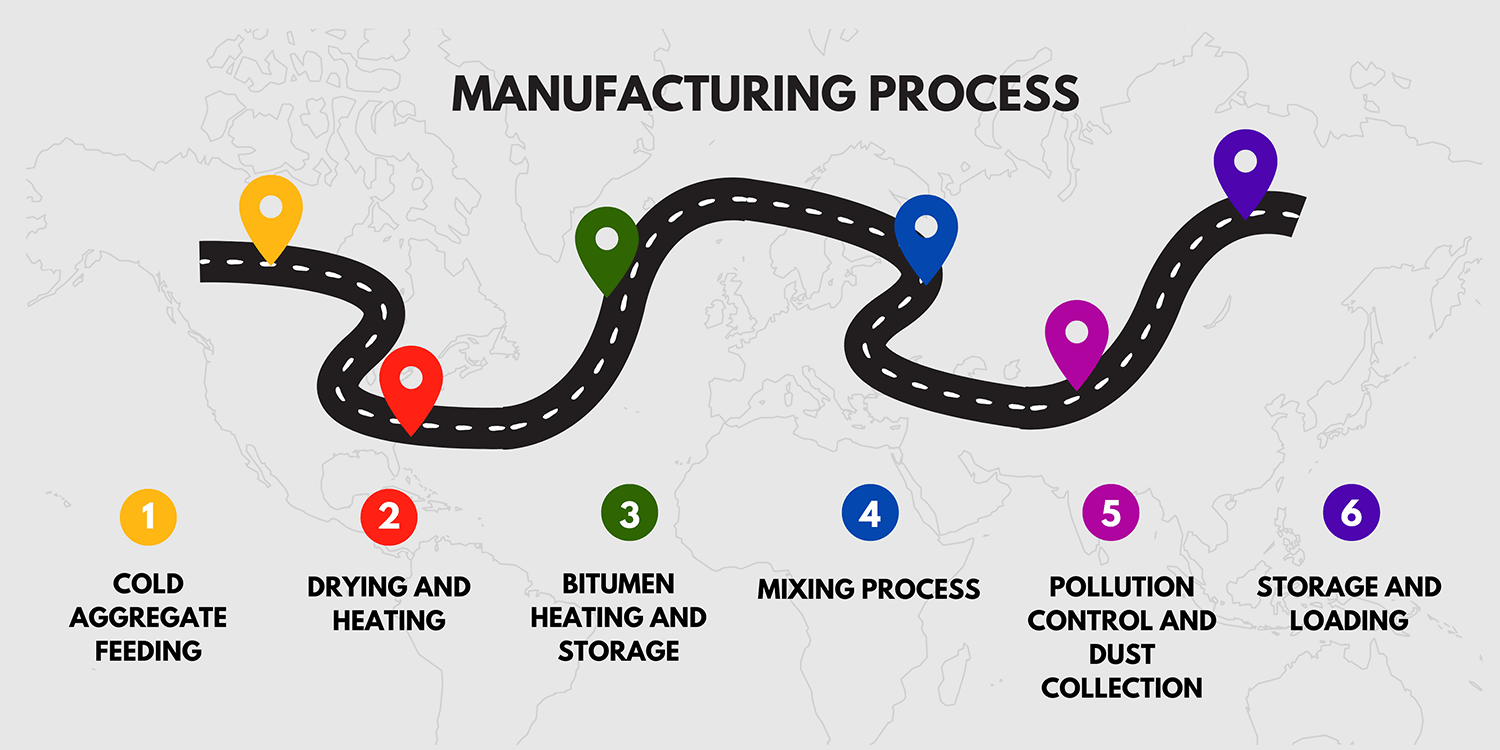
By admin / 03 Nov 2025
Asphalt is the highway of the modern road building. All highways, runways, and streets in cities are dependent on strong asphalt mix to make them strong, flexible, and long-lasting. At the back of this necessary item is another vital tool of the Asphalt Drum Mix Plant. The road-building industry depends heavily on these plants and they keep the production of asphalt consistent and of high quality.
An Asphalt Drum Mix Plant is a Continuous Type Asphalt Plant which is used to manufacture continuous hot mix asphalt. As opposed to batch plants whereby materials are processed in different batches, in drum plants all materials are blended in one drum and this guarantees quicker production and uniform production.
They are highly efficient plants and are largely applicable in large-scale road works with the benefit of being able to make the mixture continuously, with little wastes and reduced operational costs.

The process begins at the cold aggregate feeder bins. Aggregates of various sizes — such as stone, gravel, and sand — are stored separately in bins. Each bin is equipped with adjustable gates and feeders to control the flow rate.
The aggregate proportioning is crucial, as it determines the final asphalt mix design. The material is then transferred via a conveyor belt to the drying drum.
The conveyor feeds the aggregates into the rotating drying drum, which is slightly inclined to facilitate material movement. Inside the drum, a burner generates intense heat using fuel such as diesel, LDO, or gas.
As the aggregates move through the drum, hot air circulates around them, evaporating moisture and heating them to the desired temperature — usually between 150°C and 180°C.
This step ensures the aggregates are completely dry and ready to bond with bitumen.
Simultaneously, the bitumen is heated in a separate bitumen tank equipped with a hot oil circulation system. Maintaining the correct viscosity is critical — too cold, and it won’t coat the aggregates properly; too hot, and it may degrade the bitumen properties.
The heated bitumen is pumped into the mixing zone at a controlled rate.
Once the aggregates are dry and heated, they enter the mixing section of the same drum. Here, the bitumen and mineral filler are introduced.
Here, the bitumen and mineral filler are introduced. Inside the drum, specially designed flights and mixing paddles ensure uniform blending. The continuous rotation allows the hot aggregates, bitumen, and filler to mix thoroughly, forming a homogeneous hot mix asphalt (HMA).
This continuous process ensures uninterrupted production, which is especially useful for large-scale road-laying projects.
The exhaust gases from the burner carry fine dust particles. To maintain environmental standards, these gases pass through a multi-stage pollution control system, which may include:
The collected dust can also be reintroduced into the mix as filler material.
The final hot mix asphalt exits the drum and is stored in a hot mix storage silo or loaded directly into trucks. The silo helps maintain temperature consistency before transportation to the construction site.
Trucks are lined with non-stick coatings or sprayed with anti-adhesive agents to prevent sticking of the asphalt during transit.